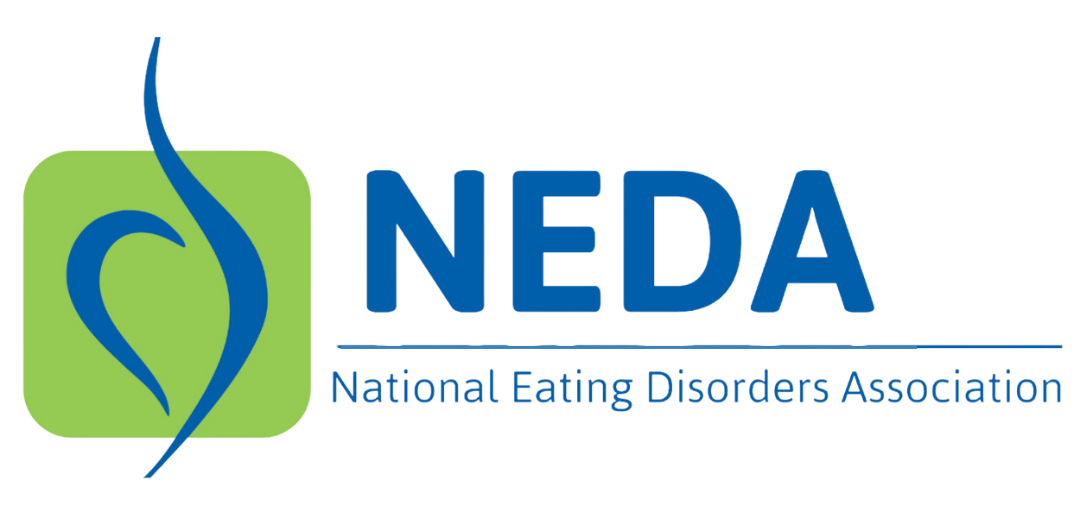by Amy Baker Dennis, PhD, FAED
What is the Difference Between Disordered Eating and Eating Disorders?
Disordered eating and eating disorders are related as they both pertain to problematic eating patterns. While they share similarities, there are significant differences between these disorders. Disordered eating refers to a spectrum of problematic eating behaviors and distorted attitudes towards food, weight, shape, and appearance. Often these behaviors include dieting, skipping meals, fasting, restricting food intake, eliminating specific foods or food groups, binge eating, excessive use of diuretics, laxatives, and weight loss medications, as well as the use of compensatory behaviors (purging, excessive exercising). Disordered eating patterns can vary in severity but do not meet the frequency, duration and/or psychological criteria for a diagnosable eating disorder.1
Eating disorders are complex mental illnesses that are characterized by persistent disturbances in eating behaviors and impairment in psychological functioning. Specific diagnostic criteria for each of the major eating disorders is outlined in the Diagnostic and Statistical Manual of Mental Disorders (DSM-5 TR) including, anorexia nervosa (AN), bulimia nervosa (BN), binge eating disorder (BED), avoidant restrictive food intake disorder (ARFID), and other specified feeding and eating disorders (OSFED).2
Key differences between disordered eating and eating disorders:1
- Diagnosis: Eating disorders meet the diagnostic criteria listed in the DSM-5 TR. The eating patterns and psychological distress in individuals with disordered eating may be remarkably similar, but they do not meet the frequency, duration and/or level of psychological impairment thresholds necessary for a diagnosable eating disorder.
- Severity and Persistence: Individuals with disordered eating often experience body image disturbance, engage in dieting and compensatory behaviors and experience psychological distress, however, the frequency, severity and duration of symptoms does not meet the DSM-5 TR diagnostic criteria.
- Psychological distress and functional impairment: Both disordered eating and eating disorders cause distress and impairment in day-to-day functioning. However, individuals with eating disorders often experience medical/physical complications, occupational issues, interpersonal relationship problems, as well as bouts of depression and/or anxiety.
What Causes Disordered Eating?
Disordered eating has various causes and is influenced by biological/genetic, psychological, sociocultural, and environmental factors.
- Biological Factors: Disordered eating, like eating disorders, may be genetically or biologically predisposed. They are not “disorders of choice” and are genetically predisposed and heritable conditions. Many individuals with disordered eating have a higher likelihood of developing eating problems due to genetics, neurobiology, and hormonal imbalances. Disruptions in appetite regulation, and the dysregulation of serotonin in the brain have also been linked to disordered eating.3
- Psychological Factors: Research has identified several personality traits that are associated with disordered eating and eating disorders. They include low self-esteem, negative body image, perfectionism, problems with set-shifting and difficulty managing negative emotions. There are also several psychological conditions that often co-occur with disordered eating behaviors like depression, anxiety, substance use disorders, obsessive compulsive disorder, and PTSD.5 It is not uncommon for individuals to attempt to improve mood, decrease anxiety or change negative body image by focusing on modifying physical appearance through dieting, excessive exercising, or cosmetic surgery.6,7
- Sociocultural issues: Our culture is laden with messages about “healthy eating”, exercise, dieting, weight loss medications, cleanses, and fasting: most are designed to persuade people to change their body (conform to a certain body ideal) and purchase products. We are bombarded with these messages on television and social media, by Madison Avenue, in movies, and through online influencers that are paid to advertise these products. The “War on Obesity” has led to “fat shaming” and can often push people into an unhealthy relationship with food. Unfortunately, this can lead to significant body dissatisfaction and engaging in dieting behavior.8 A universally accepted principle that is culturally accepted worldwide, is that the human body needs to be fueled at least three times each day. Many of the products, diets, and regimens that are promoted today disregard this important fact. Dieting is a “gateway” to eating disorders and restriction can negatively impact physical capacity, mood, concentration, and daily functioning. Dieting leads to preoccupation with food, feelings of deprivation, and loss of control around eating.8
- Environmental Factors: Traumatic events such as bullying, discrimination, natural disasters (floods, tornadoes, hurricanes), car accidents, divorce, loss of loved ones, serious illnesses, and surgeries, physical, sexual, or emotional abuse, neglect, and witnessing violence can contribute to disordered eating and eating disorders. Dieting may be used to cope with traumatic situations and regain control over one’s body.9
How is Disordered Eating Treated?
Not all disordered eating develops into a diagnosable eating disorder. However, disordered eating is a risk factor in the development of an eating disorder. Early intervention is important as it has been shown to improve treatment outcomes. Furthermore, professional treatment should be considered to help prevent symptoms of disordered eating from progressing to a more severe or chronic state and/or developing into a serious eating disorder. If you or someone you know is struggling with disordered eating or suspect an eating disorder, it is recommended to seek guidance from a professional with expertise in eating disorders.10,11
You can lean more about warning signs of an eating disorder here.
Learn more about treatment here.
Learn more about finding treatment providers in your area here.
Sources
[1] Pereira, R. F., & Alvarenga, M. (2007). Disordered eating: Identifying, treating, preventing, and differentiating it from eating disorders. Diabetes Spectrum, 20(3), 141–148. https://doi.org/10.2337/diaspect.20.3.141
[2]American Psychiatric Association. (2022). Diagnostic and statistical manual of mental disorders: DSM-5-TR. American Psychiatric Association Publishing. https://doi.org/10.1176/appi.books.9780890425787
[3] Klump, K. L., Burt, S. A., McGue, M., & Iacono, W. G. (2007). Changes in genetic and environmental influences on disordered eating across adolescence: a longitudinal twin study. Archives of general psychiatry, 64(12), 1409–1415. https://doi.org/10.1001/archpsyc.64.12.1409
[4] Culbert, K. M., Racine, S. E., & Klump, K. L. (2015). Research Review: What we have learned about the causes of eating disorders – a synthesis of sociocultural, psychological, and biological research. Journal of child psychology and psychiatry, and allied disciplines, 56(11), 1141–1164. https://doi.org/10.1111/jcpp.12441
[5] Hudson, J. I., Hiripi, E., Pope, H. G., Jr, & Kessler, R. C. (2007). The prevalence and correlates of eating disorders in the National Comorbidity Survey Replication. Biological psychiatry, 61(3), 348–358. https://doi.org/10.1016/j.biopsych.2006.03.040
[6] Pearlman, R. L., Wilkerson, A. H., Cobb, E. K., Morrissette, S., Lawson, F. G., Mockbee, C. S., Humphries, L. S., Ward, K. H. M., & Nahar, V. K. (2022). Factors Associated with Likelihood to Undergo Cosmetic Surgical Procedures Among Young Adults in the United States: A Narrative Review. Clinical, cosmetic and investigational dermatology, 15, 859–877. https://doi.org/10.2147/CCID.S358573
[7] Rounsefell, K., Gibson, S., McLean, S., Blair, M., Molenaar, A., Brennan, L., Truby, H., & McCaffrey, T. A. (2020). Social media, body image and food choices in healthy young adults: A mixed methods systematic review. Nutrition & dietetics: the journal of the Dietitians Association of Australia, 77(1), 19–40. https://doi.org/10.1111/1747-0080.12581
[8] Barakat, S., McLean, S. A., Bryant, E., Le, A., Marks, P., National Eating Disorder Research Consortium, Touyz, S., & Maguire, S. (2023). Risk factors for eating disorders: findings from a rapid review. Journal of eating disorders, 11(1), 8. https://doi.org/10.1186/s40337-022-00717-4
[9] Breland, J. Y., Donalson, R., Dinh, J. V., & Maguen, S. (2018). Trauma exposure and disordered eating: A qualitative study. Women & health, 58(2), 160–174. https://doi.org/10.1080/03630242.2017.1282398
[10] Alhaj, O. A., Fekih-Romdhane, F., Sweidan, D. H., Saif, Z., Khudhair, M. F., Ghazzawi, H., Nadar, M. S., Alhajeri, S. S., Levine, M. P., & Jahrami, H. (2022). The prevalence and risk factors of screen-based disordered eating among university students: a global systematic review, meta-analysis, and meta-regression. Eating and weight disorders: EWD, 27(8), 3215–3243. https://doi.org/10.1007/s40519-022-01452-0
[11] Oldham-Cooper, R., & Semple, C. (2021). Prevention and early help for eating disorders in young people with type 1 diabetes. Clinical child psychology and psychiatry, 26(3), 656–668. https://doi.org/10.1177/1359104521994172

